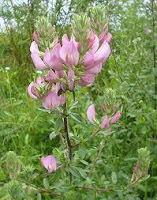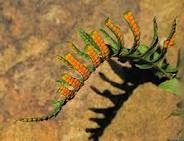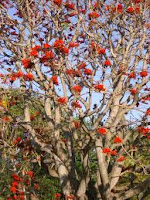This plant is native to the Mediterranean area and is called Thapsia because it is said that it was found on the island of Thapsos Greece
It grows to around 4 feet tall or 1.2 metres and looks a lot like fennel. It flowers in July and August, bearing fruit in autumn.
The ancient Greeks called it “the deadly carrot” as any cattle eating it would die, although it is related that indigenous cattle kept away from it - only imported ones were foolhardy enough to eat it. In Algeria
 Theophrastus and Dioscorides, the ancient physicians used it and it is related that the Emperor Nero used it mixed with frankincense to heal bruises. It was used as a counter irritant to rheumatic pains, but as it causes burning and a rash along with itching, its use is not recommended. The idea was that the pain caused by its use would stop the feeling of the original pain. In much the same way the Romans are said to have used nettles to restore feeling to numbed limbs on their campaign in
Theophrastus and Dioscorides, the ancient physicians used it and it is related that the Emperor Nero used it mixed with frankincense to heal bruises. It was used as a counter irritant to rheumatic pains, but as it causes burning and a rash along with itching, its use is not recommended. The idea was that the pain caused by its use would stop the feeling of the original pain. In much the same way the Romans are said to have used nettles to restore feeling to numbed limbs on their campaign in  The root is emetic and purgative, and resin can be extracted from the root bark. It is poisonous to some animals and best not touched. A preparation of the root was used for lung problems, in folk medicine.
The root is emetic and purgative, and resin can be extracted from the root bark. It is poisonous to some animals and best not touched. A preparation of the root was used for lung problems, in folk medicine. Scientists have managed to extract phenylpropanoids from the fruit which were “found to be potent cytotoxins” according to a study in Phytochemistry Vol.67 (4) pp 2651-56 by Huizhen Liu et al.
This research led to other studies and the thapsigargins found in the resin of this plant have been developed as an anti-cancer treatment. Specifically the US Food and Drug Administration (FDA) are conducting phase one trials on a select group of prostate cancer patients and it is hoped that the treatment will prove to be as effective at killing cancer cells in humans as it was in the lab. However it will be some time before the treatment can be deemed safe as trials usually consist of three phases in human subjects.




















































